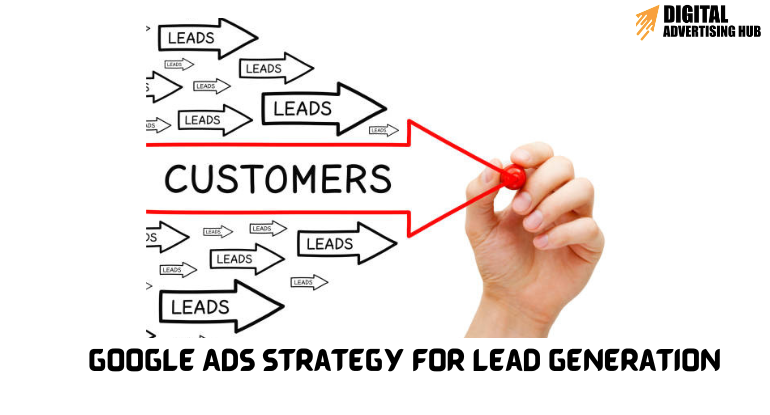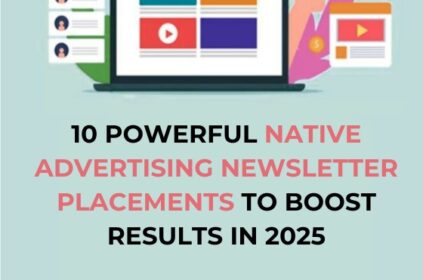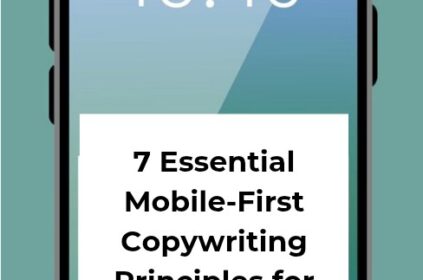Do you own a business that wants to get more leads and make more sales? To accomplish these objectives, Google Ads can be a useful tool. You may target potential clients at the exact time they’re searching for your goods or services by using Google Ads efficiently.
Businesses that use Google Ads earn an average return on investment (ROI), according to Webfx. This implies that companies should anticipate making $2 in revenue for every $1 invested in online advertising.
I have decided to provide the practical strategies in this in-depth post to assist you in developing an effective Google Ads campaign that produces leads of the highest quality and turns them into paying clients. Everything from identifying your target market to monitoring and evaluating your outcomes will be covered.
Are you ready to take your lead generation efforts to the next level?
Reasons Why Google Ads Are Suitable for Lead Generation
For companies of all sizes, Google Advertising is a very successful lead generating tool. For the following five reasons,
#1. Targeted reach: Google Ads give you the ability to precisely target the clients you want to work with. You may connect with people who have expressed interest in your sector as well as those who are actively looking for your goods or services.
#2. Measurable outcomes: You can monitor and assess the performance of your campaign in real-time using Google Ads. This helps you to make data-driven decisions and tailor your strategy for optimal outcomes.
#3. Scalability: Businesses of all sizes can utilize Google Ads since it is a scalable platform. You can easily adjust your budget and targeting to fit your unique demands, regardless of the size of your company—whether it is a tiny startup or a huge one.
#4. Flexibility: With so many campaign kinds and targeting choices available through Google Ads, you can reach your target audience in a way that best suits your company’s needs.
#5. Economical: Creating leads with Google Ads may be an economical strategy. You are in charge of your spending and may create your own budget.
You can determine if Google Ads is the best platform for your company by being aware of the advantages it offers for lead creation.
Practical Strategies to Get More Customers and Sell with Online Advertising
#1. Recognizing Who Your Target Audience Is

Identifying your target market is crucial to running successful Google Ads advertising. You can customize your messaging and make sure the correct people see your advertising by knowing who your target clients are.
Developing Personas for Buyers
An imaginary depiction of your perfect client is called a buyer persona. It facilitates your ability to picture and comprehend their requirements, drives, and actions. Use these procedures to develop buyer personas that work:

1. Determine who your ideal client is: Ascertain the features of your prospective client, such as their hobbies, demographics, and problems. Take into account variables like age, gender, geography, income bracket, profession, and interests.
2. Carry out market research: Use social media listening, interviews, and surveys to learn more about your target demographic. Observe their internet activities, including the websites they frequent, the media they access, and the social media networks they join.
3. Establish thorough profiles: Create thorough profiles of your buyer personas that include their objectives, difficulties, and driving forces. Think about inquiries like these:
• What are their main sources of discomfort?
• What are their objectives?
• What worries and anxieties do they have?
• What process do they use to decide what to buy?
• Where do they obtain their knowledge from?
Tips for Conducting Market Research
The following advice can help you carry out efficient market research:
#1. Make use of internet resources: You may perform market research with the aid of several online resources, including analytics software, social media listening tools, and survey platforms. These are a few instances of such tools:
Platforms for surveys: Typeform, Google Forms, SurveyMonkey
Tools for social media listening: Sprout, Brandwatch, and Hootsuite Software
For social analytics: Adobe Analytics, Mixpanel, Google Analytics
#2. Conduct interviews: Interview existing consumers or future customers to get insights into their requirements and preferences.
#3. Analyze customer data: Look over your current customer information to find trends and patterns.
#4. Watch social media: Pay attention to what people are saying about your industry and competitors on social media sites.
By creating detailed buyer personas and conducting thorough market research, you can gain a deeper understanding of your target audience and tailor your Google Ads campaigns to their specific needs.
#2. Keyword Research and Optimization
Doing thorough keyword research is essential to making sure the correct people see your Google Ads. Increase your exposure and draw in quality leads by choosing pertinent keywords and improving your landing pages and ad language.
Keywords’ Importance in Lead Generation
The terms or phrases that potential customers look for when seeking for goods or services are known as keywords. You may raise the likelihood that your Google Ads will show up at the top of search results pages by including relevant keywords in them.
Effective Keyword Research Techniques
The following are some efficient methods for carrying out keyword research:
#1. Employ keyword research tools: There are a variety of internet resources at your disposal to assist you in locating pertinent keywords. Ahrefs, SEMrush, and Google Keyword Planner are a few well-liked choices. You can obtain information on search traffic, competitiveness, and similar terms by using these tools.
#2. Examine other businesses: Find out which keywords they are utilizing in their Google Ads. To examine how often they employ keywords, you may use tools like SpyFu or SEMrush.
#3. Take user intent into account: Evaluate the objectives and search terms of your intended audience. Do they want items, services, or information? Selecting the appropriate keywords will be made easier if you know what they mean.
#4: Make use of long-tail keywords: These terms are frequently less competitive and more specialized. To avoid using the wide keyword “shoes,” you may use the long-tail term “women’s running shoes size 8.”
#3. Optimizing Landing Pages
After determining pertinent keywords, it’s essential to improve your landing pages. This entails adding your target keywords to the text of your landing page. The first page a visitor sees after clicking on your advertisement is your landing page. It ought to be made with lead generation and conversion optimization in mind.
Here are some suggestions for landing page optimization:
#1. Stay focused: Your landing page should have one main objective, such encouraging sign-ups or purchases.
#2. Make use of clear headlines and subheadings: Your landing page should contain easy-to-read headers and subheadings.
#3. Make effective calls to action: Your call to action have to be obvious, appealing, and simple to locate. For instance, you may utilize a more targeted call to action like “Shop Now” in place of a general one like “Learn more.”
#4. Optimize for mobile: With more and more consumers turning to their smartphones for product and service searches, make sure your landing page is mobile-friendly. This entails making sure your website loads quickly and is simple to use on smaller displays.
#5. Useful photos and videos: Give your product or service a visual representation by using photos and movies of the highest caliber. Your landing page may become more compelling and engaging as a result of this.
#6. Social proof: Reviews and testimonials can aid in establishing credibility with potential buyers. Add components of social proof to your landing page, such as reviews, ratings, or case studies from clients.
#7. Minimal distractions: To prevent diverting visitors, maintain a clear and clutter-free landing page. Eliminate everything superfluous that might detract from your call to action.
Effective keyword research and landing page optimization will help you get more exposure and draw high quality leads. Never forget to concentrate on giving your visitors an experience that is understandable, engaging, and easy to use.
#4: Crafting Strong Ad Copy
The first impression that potential buyers will have of your company comes from the copy in your ads. It ought to be intriguing, convincing, and relevant to your target audience.
Elements of Effective Copy
#1. Strong Headline: The first element of effective ad copy is a strong headline. It should draw the reader in and contain your target term. Since this is what prospective buyers would see first, make sure it’s interesting and pertinent.
#2. Clear call to action: Inform prospective clients of the actions you would like them to do, such as registering, buying, or downloading a resource. It is easier for customers to take the next step when there is a clear call to action.
#3. Relevant ad extensions: Use ad extensions to enhance the visual attractiveness of your advertisements and offer extra details. For instance, you could use callout extensions to draw attention to important aspects of your product or service, or sitelink extensions to link to certain pages on your website.
#4. Robust value proposition: Outline the advantages of your item or service in clear terms. Why is your product or service special and valuable?
#5. Relevance of the keyword: Naturally include your intended keywords in the body of your advertisement. This will support the placement of your advertising in pertinent search results.
Tips for Writing Persuasive Ad Copy
#1. Make use of strong verbs: Verbs may can impact and interest to your advertisement content. Rather than stating “We provide plumbing services,” you may state “We offer expert plumbing solutions.”
#2. Establish a feeling of urgency: To do this, use phrases like “now,” “limited time,” or “exclusive.” This may prompt prospective clients to act right away.
#3. Make use of social proof: Reviews and testimonials may aid in establishing credibility with prospective clients. Provide gratifying testimonials from contented clients to highlight the benefits of your offering.
#4. Maintain simplicity: Steer clear of employing technical or jargon terminology that can be confusing to your target audience. Your advertising material should be simple to read and comprehend.
By following these tips, you can create ad copy that will capture the attention of potential customers and encourage them to take action. Read more about the Best Landing Page Copywriting Techniques for any Business Setup in 2024.
#5. Remarketing and Leveraging Google My Business
Remarketing is an effective tactic to reach people who have come to your website before but left without making a purchase. You may remind them of your company and motivate them to act by displaying relevant advertisements to them.
How to Put Remarketing into Practice
1. Configure remarketing tags: To monitor visits to your website, use remarketing tags.
2. Create remarketing audiences: Based on user behavior, such as users who browsed a particular product page or left their shopping cart empty, define several remarketing audiences.
3. Produce remarketing advertisements: Make advertisements that appeal to the remarketing audiences.
4. Establish your budget and bidding plan: For your remarketing efforts, decide on a budget and a bidding strategy.
Leveraging Google My Business is essential for local businesses. By optimizing your Google My Business listing, you can improve your local search rankings and attract more customers.
Ways to Make Google My Business Listings Better
1. Claim your listing: Go to Google My Business and claim your listing if you haven’t previously.
2. Finish creating your profile: Give precise and current details about your company, such as your name, location, phone number, website, and operating hours.
3. Include excellent images: Utilize top-notch images to promote your company, goods, and services.
4. Promote client testimonials: Inspire clients to provide testimonials on your Google My Business page.
5. Address client feedback: React to reviews, both good and bad, to demonstrate that you appreciate what your clients have to say.
6. Post regularly: Post updates about your business, such as new products, promotions, or events, to keep your listing fresh and engaging.
By effectively using remarketing and leveraging Google My Business, you can increase your visibility, attract more customers, and improve your overall marketing efforts.
#6. Tracking and Analyzing Your Results
Monitoring and evaluating your campaign’s performance is crucial to determining how successful your Google Ads campaign was. By doing this often, you can determine what is and is not effective and use that information to inform data-driven decisions that will enhance the effectiveness of your campaign.

Keeping Track of Conversions using Google Analytics
One effective tool that may assist you in tracking conversions and other important data is Google Analytics. You may track the number of individuals who click on your advertisements and complete the required action—such as subscribing to your newsletter or completing a purchase—by putting up conversion tracking.
Tips for Optimizing Your Campaign Based on Data
#1. Monitor key performance indicators: Keep an eye on crucial information such as cost per acquisition, conversion rate, and click-through rate.
#2. Identify trends: Look for patterns in your data to identify areas that want improvement.
#3. Make data-driven decisions: Use your data to inform decisions about your campaign by changing your ad language, bidding strategy, or targeting.
#4 A/B testing different parts: To determine what works best, test out different campaign components including targeting parameters, landing sites, and ad copy.
By tracking and analyzing your performance, you can make the most out of your Google Ads campaign and accomplish your desired outcomes.
How to Create Google Ads Lead Generation Forms
Lead forms are necessary to obtain important data from prospective customers. You can produce excellent leads and nurture them into paying clients by developing lead forms that work.
The Value of Effective Lead Generation Forms
An effective lead form can assist you in:
#1. Compile important client information: To better understand your target market, gather data such as name, phone number, email address, and preferences.
#2. Qualify leads: Determine which leads have the highest chance of becoming clients.
#3. Nurture leads: Establish rapport with prospective clients by utilizing tailored advertising efforts.
#4. Evaluate the performance of your campaign: Monitor lead generation and conversion rates to assess how successful your Google AdWords ads are.
Tips for Designing High-Converting Lead Forms
#1. Keep it brief and easy: Don’t ask for too much information up front because it may discourage prospective buyers from filling out the form.
#2. Employ concise and straightforward language: Make use of plain, understandable language.
#3. Make it aesthetically pleasing: Create a lead form that is easy to read and use.
#4. Make use of a clear call to action: Indicate clearly what you would want visitors to do by using words like “Sign Up” or “Download Now.”
#5. Provide incentives: To entice potential clients to fill out the form, think about providing incentives like discounts or access to exclusive material.
#6. Test several iterations: Compare multiple versions of your lead form to seewhich one works best.
Integrating Lead Forms with Your Google Ads Campaigns
You can integrate lead forms with your Google Ads campaigns using a variety of methods:
#1. Landing pages: Create dedicated landing pages with lead forms and link them to your Google Ads.
#2. Lead generation ads: Use Google Ads’ lead generation ads to collect leads directly within the ad.
#3. Tagging your website: Add tracking tags to your website to track conversions and attribute leads to specific Google Ads campaigns.
By creating effective lead forms and integrating them with your Google Ads campaigns, you can generate more leads and improve your overall marketing efforts.
How Can I Convert Leads from Google Ads?

Once you’ve generated leads through your Google Ads campaigns, the next step is to convert them into paying customers. Here’s a step-by-step guide to help you achieve this:
#1. Nurture Leads with Personalized Marketing
Group leads based on their characteristics, interests, and behavior to send targeted messages. For example, you could segment leads by industry, job title, or location.
Provide content that speaks to the unique requirements and problems of every lead category. If your business is software, for instance, you may make customized material for leads in the healthcare, finance, or retail sectors.
Automated email campaigns are a great way to nurture leads and maintain brand awareness. Email marketing tools like as HubSpot and Mailchimp allow you to design and distribute customized email campaigns.
Use social media to interact with leads in order to establish rapport and share insightful material. Answer queries, contribute to conversations, and share pertinent articles.
#2. Offer Value and Build Trust
Share educational and beneficial information that demonstrates your knowledge and addresses issues faced by your target audience. Blog posts, webinars, whitepapers, and case studies can come in under this category.
Be truthful and open in your correspondence with potential customers. Talk about the goals and objectives of your business and be honest about the goods and services you offer.
Offer incentives to entice leads to act, including exclusive offers or access to content. For instance, you may provide prospective clients with a complimentary trial of your good or service.
#3. Time Your Follow-Ups Strategically
Reach out to leads within 24 hours of them submitting their information. This shows that you’re interested in their needs and responsive to their inquiries.
Tailor your follow-up messages to each lead’s specific interests and needs. Refer to information you’ve gathered about them, such as their industry or job title.
Follow up through email, phone, or social media to increase your chances of reaching leads. If you don’t get a response through one channel, try another.
#4. Overcome Objections and Address Concerns
Identify common objections that leads may have and prepare responses. For example, if you’re selling a software product, you might anticipate objections related to cost, complexity, or lack of time.
Listen to leads’ concerns and provide helpful solutions. Show that you understand their perspective and are committed to addressing their needs.
Reassure leads that their decision to do business with you is the right one. Highlight the benefits of your product or service and how it can help them achieve their goals.
#5. Close the Deal Effectively
Use persuasive language to encourage leads to take action. Highlight the benefits of your product or service and how it can solve their problems.
Make it easy for leads to make a purchase or sign up for your services. Use strong calls to action, such as “Buy Now” or “Sign Up Today.”
Offer ongoing support and assistance to ensure customer satisfaction. This could include providing training, troubleshooting, or answering questions.
By following these steps, you can effectively convert leads from Google Ads into paying customers and grow your business.
Conclusion
By following the strategies outlined in this guide, you can create a successful Google Ads campaign that generates high-quality leads and drives sales. Remember to continuously monitor your campaign’s performance, make data-driven decisions, and stay up-to-date on the latest Google Ads best practices.
By implementing these strategies, you can effectively use Google Ads to achieve your lead generation goals and grow your business.










